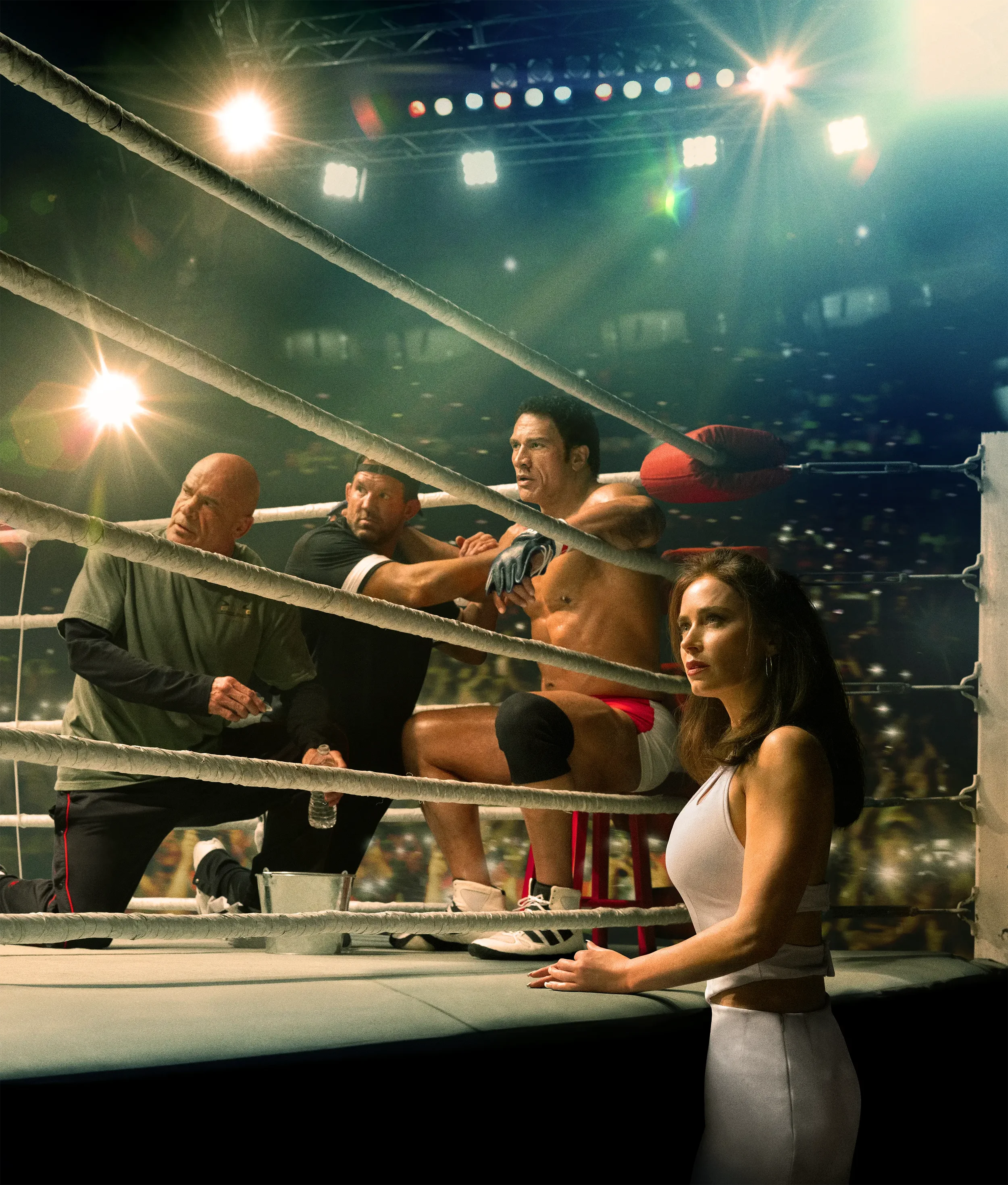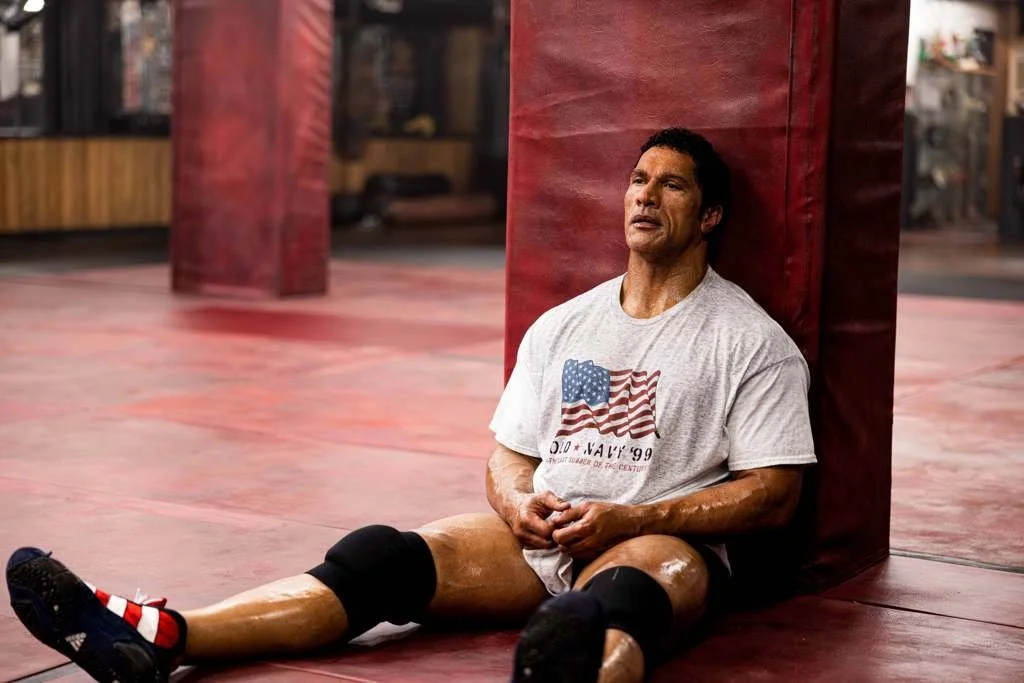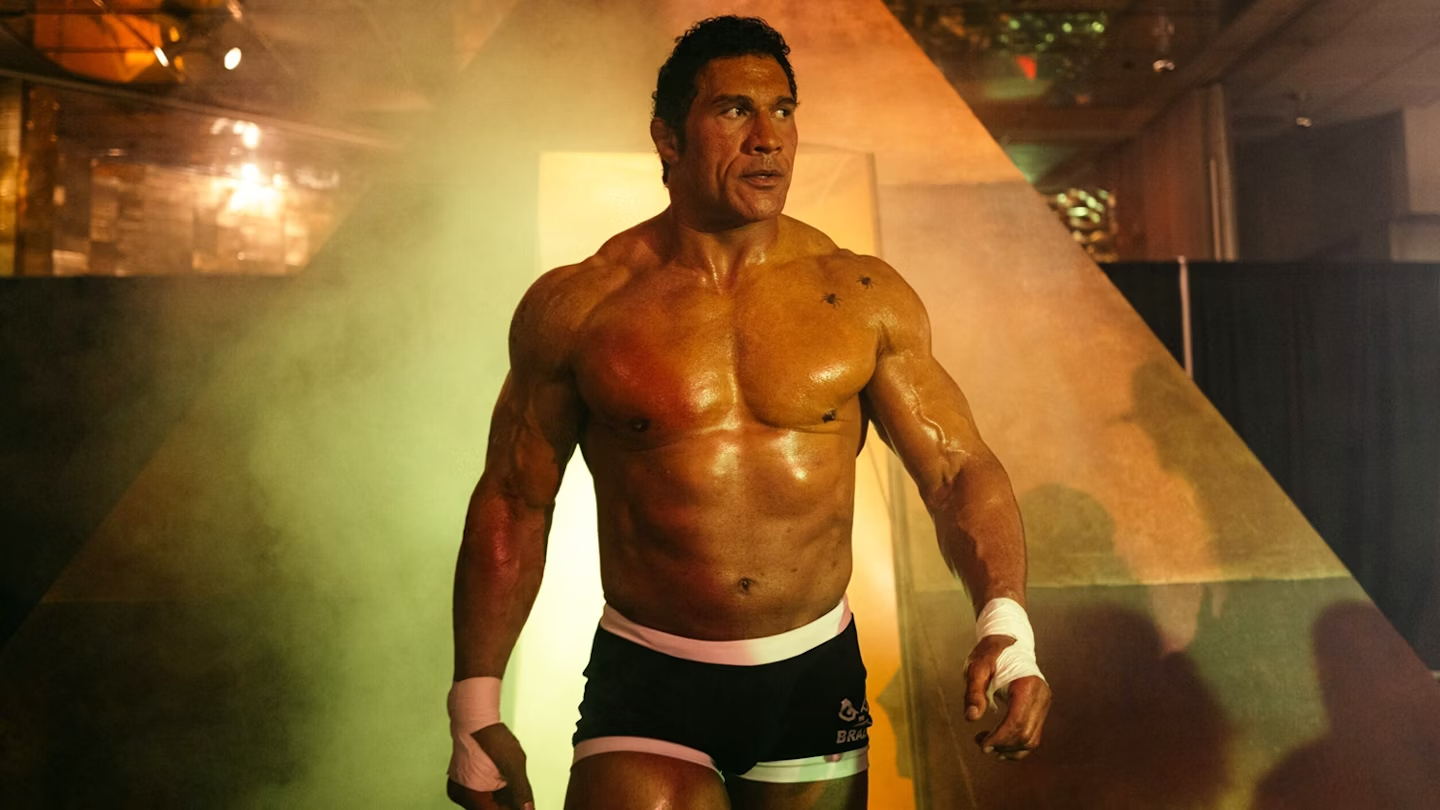‘The Smashing Machine’ Review: Benny Safdie’s Anti-Safdie Docudrama
Benny Safdie breaks the aesthetics that he developed over the years with his brother Josh to craft a surprisingly patient, often discordant docudrama in The Smashing Machine, which sets his solo directorial career on exciting horizons.
Every Safdie Brothers film – either made individually or as a collective – is a gift to the world, and The Smashing Machine is no different. In his first solo directorial outing, Benny Safdie is attempting to distance himself as far as possible from the brand of anxiety-inducing cinema that made him and his brother, Josh Safdie, household names with films such as Heaven Knows What, Good Time, and Uncut Gems. In fact, I’d even go further and say that The Smashing Machine feels like an anti-Safdie Brothers film – call it Benny’s breakup from the band – where he attempts something drastically opposed to the controlled chaos of the brothers’ previous two efforts that put them on the map much further than their independently-made masterpieces.
Instead of having a bevy of characters shouting at each other, Safdie crafts a patient, cyclical docudrama on the personal struggles of UFC athlete Mark Kerr (Dwayne Johnson) and his reaction when he loses a match for the first time. Technically, he didn’t lose. His opponent repetitively performed an illegal move after being told, at a press conference, that the move was not allowed, which led to the match being ruled a “no contest.” But even this “no contest” puts a stain on his otherwise immaculate winning streak. At the time of this soul-crushing loss, Kerr, brute force in the ring but an incredibly well-mannered gentleman outside of it, was already addicted to painkillers, likely to numb the effects that Mixed Martial Arts (MMA) had on his body. However, his addiction gets further out of control after he returns from Japan, and lives with the consequence of this “no contest.”
What does this “no contest” mean for Kerr, one who enjoys the adulation of fans and the “high” he gets from winning, as he tells his wife, Dawn (Emily Blunt), during a heartbreaking conversation? We don’t know, because Maceo Bishop’s camera does the exact opposite of most cinéma vérité documentaries, which creates a discordant effect for the bulk of the runtime. Instead of honing in on the subject in the most intimate, authentic way possible, with very little intervention from its cineaste, who tries to remove the artifice and theatrics of cinema as much as possible (see Pierre Perrault’s The Shimmering Beast, as a great example of this), the camera tries to observe him at a distance. In some cases, it results in some genuinely jaw-dropping 16mm imagery, notably when it comes to staging every single MMA fight in the 125-minute picture.
All of them are incredibly violent and surprisingly visceral, especially when Safdie and Bishop try to showcase Kerr’s mentality being tested in ways he never thought possible after his “no contest.” Is his head in the game, or is it out of it? At some point, Safdie gives us the answer, which removes some of the ambiguity of The Smashing Machine’s genuinely effective first half, allowing the audience to draw their own conclusions on who Kerr is – inside and outside the ring – instead of having the filmmaker’s sensibilities being fed directly at them like many unconfident artists do.
It’s unsurprising to me that, for The Smashing Machine, Safdie excels the most at crafting images of genuine emotional power and actively plays with form, just as he did with his brother in several of their collaborations. In the case of this movie in particular, the camera feels less sweeping and erratic than in Good Time or Uncut Gems, but actively seeks to draw the audience in through an approach that is the exact opposite. It’s handheld, yes, but the movement is more patient than the Safdie titles that try to give us an anxiety attack at all times. And Bishop, who previously collaborated with Safdie on The Curse, has a keen eye for making this drama feel as textured as possible within the language of a vérité documentary.
The camera acts as an “invisible eye” to the figures it attempts to document, and, most importantly, never judges them. This is the golden rule of vérité filmmaking, which Safdie respects throughout the movie, from its VHS-shot opening to its IMAX-captured epilogue, which features the first-ever handheld zoom captured on 15/70mm film (a playful step for large-format photography). In one section, Safdie recalls what Kerr represents to him, but, beyond that, there’s no opinion being forged. You’re the one who has to parse what Safdie imparts in his quasi-fictional retelling of Kerr’s highs and lows.
Unfortunately, the distant language crafted by Safdie and Bishop prevents us from fully latching onto any of the characters he captures. In a vérité film, the sense of proximity is so close that we end up feeling immersed in the lives of those being captured. In The Smashing Machine, it’s not at all what happens. We’re way too distanced, thus the sense of understanding of the figures Safdie depicts feels limited. Even if Bishop’s camera shows us the facet of Kerr’s private life that the athlete does not want us to see, we’re still not grasping anything meaningful out of those segments, because Safdie wants us to feel as far away as possible from Kerr and everyone else. He shows us a life of pain and regret, without wishing to evoke the same complex emotions Kerr does, especially when he breaks away from his gentlemanly façade and expresses urgent physical and emotional pain.
It often makes Johnson’s performance feel ridiculous, even if he, at times, can inspire a good dramatic turn or two. But a career-best, Oscar-worthy turn? Give me a break. The actor previously portrayed an addict in a much more psychologically riveting – and complex – light in Michael Bay’s Pain & Gain, which still remains The Rock’s greatest-ever performance. If he didn’t get an Oscar nomination for this, he’s sure as hell not getting one now. Can he modulate different emotional registers effectively as Kerr? Yes. Does he give a damn about being in this film more than he does in his recent output of “content?” Absolutely, but the laughable prosthetics, courtesy of makeup artist Kazu Hiro, feel more parodic than helping the movie’s main draw tap into territories he was previously unable to explore.
In fact, he’s frequently eclipsed by Blunt, who’s genuinely terrific as Dawn, and can represent a litany of complex emotions in one short sequence than The Rock does in an entire movie. Even Ryan Bader’s surprisingly moving supporting turn as Mark Coleman, Kerr’s best friend and prospective rival during the 2000 Pride MMA Grand Prix in Japan, is shockingly great and vastly superior to the main star’s supposedly “best performance of his career.” They have more to work with than The Rock desperately trying to bait awards voters into giving him an unearned Oscar, especially considering the work he did in Bay’s film that should’ve – no joke – gotten him the Academy Award nomination he wants now.
Still, one can’t deny the sense of craftsmanship in Safdie’s film, alongside a riveting score from Nala Sinephro, acting as a cross between John Medeski and Daniel Lopatin’s best instincts. The marriage of both form and unconventional music is enough for me to appreciate at least what Safdie is doing, even if I have strong reservations about the project, compared to Uncut Gems, which remains the best film of the 2010s. As a singular artist, Benny still has lots to prove, but he’s certainly carving an intriguing path forward in his solo career, while Josh looks to be sticking with the anxiety formula for his upcoming Marty Supreme that could upset The Rock’s chances at the Oscars, with what looks like to be Timothée Chalamet’s greatest-ever performance.




